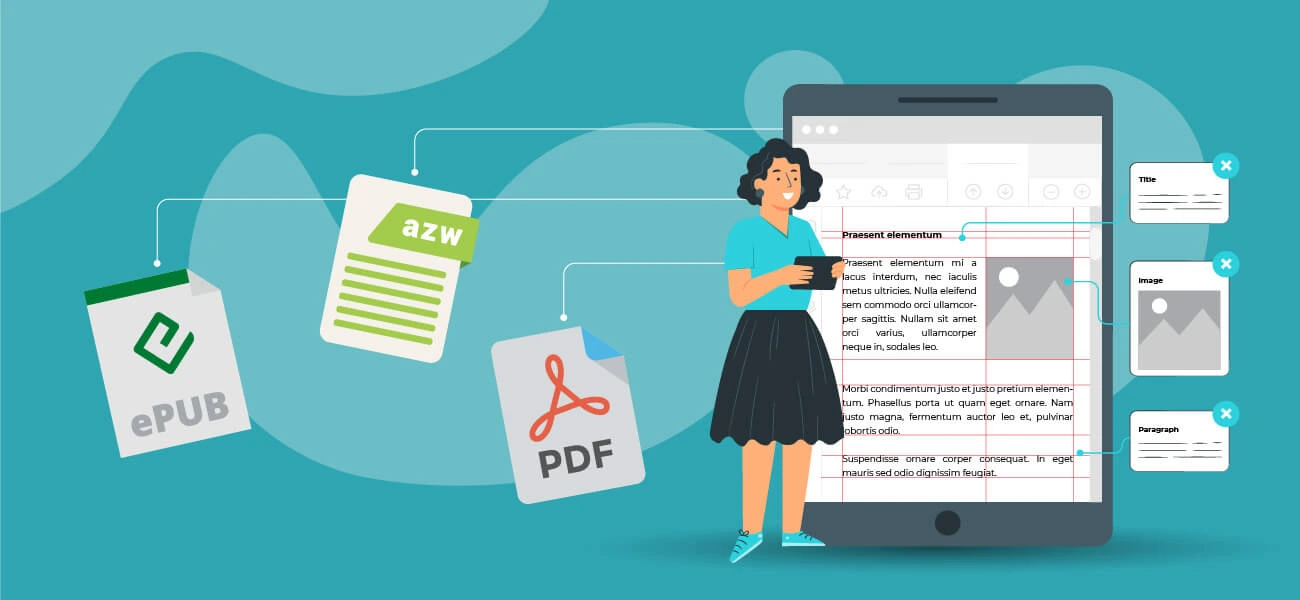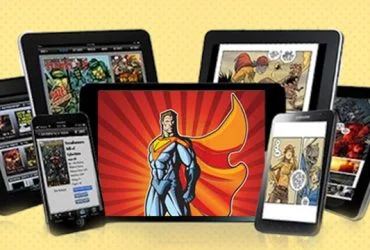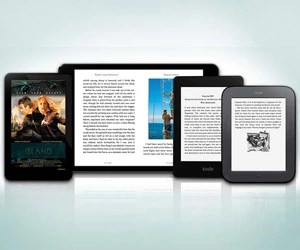What is an eBook? A Complete Beginners Guide for Publishing
Think of it this way: instead of flipping physical pages, you are tapping a screen or scrolling through content. That’s the magic of digital reading. But what is an eBook really? It’s not just a PDF on your tablet—it’s a portable, searchable, and easily shareable version of a book.
Whether you are an author, a student, or just someone curious about digital publishing, learning about ebooks is a solid starting point. In this guide, we'll unpack everything from formats to future trends so you can navigate the world of ebooks like a pro.

What is an eBook?
An ebook, or electronic book, is a digital version of a book that can be read on computers, tablets, smartphones, or e-readers. Unlike traditional print books, ebooks are accessible through apps and devices, offering a new way to consume literature, textbooks, manuals, and more.
They are structured documents that include text, images, hyperlinks, and sometimes multimedia elements like audio or video. The ebook file is compact and easily stored, making it a practical alternative to bulky physical books. This shift to digital has changed the landscape of reading, publishing, and sharing written content across the globe.
eBook Formats
Understanding eBooks format is key before creating or reading one. Different platforms support different file types, so here are the top formats you should know:
-
EPUB (.epub)
The most widely accepted open format. Reflowable and flexible, it adapts to different screen sizes, making it ideal for most devices.
-
PDF (.pdf)
A fixed-layout format that maintains the exact look of a printed page. Great for academic and graphic-rich documents but not ideal for small screens.
-
MOBI (.mobi)
Designed for Amazon Kindle, this format supports bookmarks and annotations. Although somewhat outdated, it's still relevant in Kindle publishing.
-
AZW (.azw, .azw3)
Amazon’s proprietary format, similar to MOBI but with DRM protection. Suitable for Kindle devices only.
-
IBA (.iba)
Created with Apple’s iBooks Author, this format allows rich media but can only be viewed on Apple devices.
-
TXT (.txt)
Plain text format. Very basic—no images or formatting—but extremely lightweight and compatible with nearly every device.
Choosing the right format depends on your purpose—whether you are reading an ebook, designing one, or distributing it.
Types of eBooks
There are multiple types of ebook, each designed for a different reader experience or content goal. Here are the most common ones:
- Fiction and Non-fiction eBooks: From novels to biographies, these are typical literary reads.
- Textbooks: Used in education, often include interactive features and multimedia.
- Manuals and Guides: Instructional content such as DIY guides, software manuals, etc.
- Cookbooks: Often include images, step-by-step instructions, and clickable indexes.
- Children’s Books: Colorful, interactive, and often include animations or voice narration.
- Comics and Graphic Novels: Rely on fixed-layout formats to retain design integrity.
Each type serves a distinct purpose, so choose based on your audience and content.
Benefits of eBook
The benefits of ebook adoption are numerous, especially for both readers and publishers. Here are advantages explained in detail:
Portability: Carry thousands of books in one device. No need for bulky backpacks or shelves full of hardcovers.
Instant Access: Download and start reading instantly. Perfect for spontaneous readers or last-minute assignments.
Customizable Reading Experience: Adjust font size, background color, and brightness. This is great for users with visual impairments or reading preferences.
Searchable Text: Find keywords or specific passages without flipping through pages manually.
Interactive Features: Includes links, videos, notes, and more—especially useful in academic or instructional ebooks.
Cost-Effective Publishing: No printing or shipping costs make it affordable to create an ebook and get it out to the world.
Drawbacks of eBook
Despite the perks, there are notable drawbacks of ebook formats. Here are the disadvantages:
Screen Fatigue: Prolonged reading on screens can cause eye strain and headaches, especially on non-e-ink displays.
Device Dependency: No battery or no device? No reading. You're tied to technology to access your books.
Limited Ownership Feel: You can’t really "own" a digital copy like a physical one. Lending and reselling are restricted by DRM.
Compatibility Issues: Some eBooks format aren’t universally supported, leading to access problems on certain devices.
Understanding these helps you decide when digital makes sense and when print might be better.
Popular eBook Devices
Several gadgets are optimized for reading an ebook. Here are the top e-reader and smart device options:
- Amazon Kindle: Offers e-ink displays that reduce eye strain and long battery life.
- Kobo: Supports multiple formats like EPUB and integrates with public libraries.
- Apple iPad: Versatile but can lead to screen fatigue over long reading sessions.
- Android Tablets: Good for multi-use, but not as ideal for long-term reading.
- Barnes & Noble Nook: Popular in the U.S., especially for Nook-purchased content.
Each device comes with specific strengths depending on the user’s needs—whether casual, academic, or professional.
How to Make an eBook?
Creating an ebook is more accessible than ever. Here’s how:
Choose Your Topic and Audience: Define who you're writing for and why—it helps structure the content.
Write and Edit the Content: Use tools like Google Docs or MS Word. Ensure the manuscript is error-free and well-formatted.
Design the Layout: Tools like Canva, Adobe InDesign, or Vellum help with ebook design.
Convert to eBook Format: Use tools like Calibre or Scrivener to convert files into EPUB, MOBI, or PDF.
Add Metadata and Cover: Create an eye-catching cover and add metadata like title, author name, and description for discoverability.
How to Publish an eBook?
Once your ebook is ready, it’s time to publish. Here’s a quick breakdown:
-
Choose a Platform: Amazon KDP, Apple Books, Smashwords, or Kobo Writing Life are top choices.
-
Upload Your eBook File: Make sure your ebook file meets the platform’s guidelines.
-
Set Pricing and Rights: Decide whether you want global rights and choose a price point.
-
Launch and Promote: Use social media, email marketing, and blogs to announce the launch. Publishing an ebook today is less about gatekeeping and more about reach.
Selling eBooks
Selling ebooks can be a passive income stream or a brand booster. You can sell through:
- Marketplaces: Amazon Kindle Store, Google Play Books, Apple Books.
- Your Website: Use tools like Gumroad or Payhip for direct sales.
- Affiliate Platforms: Sites like ClickBank allow others to promote your ebook for a commission.
Make sure your marketing strategy aligns with your sales goals.
Distributing eBooks
Distributing an ebook goes beyond just uploading it somewhere. Here’s how you can spread the word and get downloads:
- Email Marketing: Offer a free ebook in exchange for email subscriptions.
- Content Marketing: Blog posts, free samples, and YouTube videos boost visibility.
- Social Media: Use platforms like LinkedIn, Instagram, and Facebook to reach readers.
You can also use aggregators like Draft2Digital for wide distribution across multiple platforms.
The Future of eBooks
The future of ebooks looks bright and dynamic. With the rise of AI, AR, and personalized content, ebooks are evolving from simple text to immersive experiences. We're seeing trends like interactive textbooks, voice-assisted reading, and smart annotations. Subscription-based models like Kindle
Unlimited are reshaping ownership and access. Sustainability concerns are also pushing more publishers and readers toward digital formats. As technology advances, so will how we create an ebook, read, and share them—opening more doors for authors and readers alike.
Conclusion
Now that you understand what is an ebook, you are better equipped to explore its vast possibilities. From choosing the right eBooks format to understanding the benefits of ebook reading, you’ve got the basics covered.
Whether you plan to write one, publish one, or simply enjoy reading them, ebooks offer flexibility and reach like never before. As the future of ebooks continues to evolve, there's no better time to dive into the world of digital publishing. So go ahead—start exploring, writing, or selling. The next chapter is yours to write.
Frequently Asked Questions
Before publishing an eBook, edit and proofread thoroughly, format it for different devices, design a compelling cover, and write an engaging description. Research your target audience and choose the right platform. Ensure copyright protection and consider marketing strategies like email campaigns or social media to build anticipation and reach potential readers.
To publish a book, finalize your manuscript, edit it professionally, and design an attractive cover. Choose between self-publishing or traditional publishing. Format the book for digital or print, create a strong description, set pricing, and upload it to platforms like Amazon Kindle Direct Publishing (KDP) or other eBook distribution services.
To publish your e-book, ensure it’s properly edited and formatted. Convert your manuscript into formats like EPUB or MOBI. MAPSystems provides eBook conversion services to streamline this process. Once ready, choose platforms like Amazon KDP, Smashwords, or Apple Books, upload your files, set pricing, and publish for a global audience.
Publishing an eBook offers a cost-effective way to share your knowledge or stories with a global audience. eBooks are accessible, easy to distribute, and have a growing market. They offer faster publishing timelines, better royalties in self-publishing models, and allow you to build your brand or generate passive income.
Yes, publishing your book on Amazon offers huge benefits. Amazon’s Kindle platform reaches millions of global readers, provides easy-to-use tools for self-publishing, and offers royalty options up to 70%. It’s ideal for visibility, sales, and reaching your target audience without needing a traditional publisher or complicated distribution setup.



